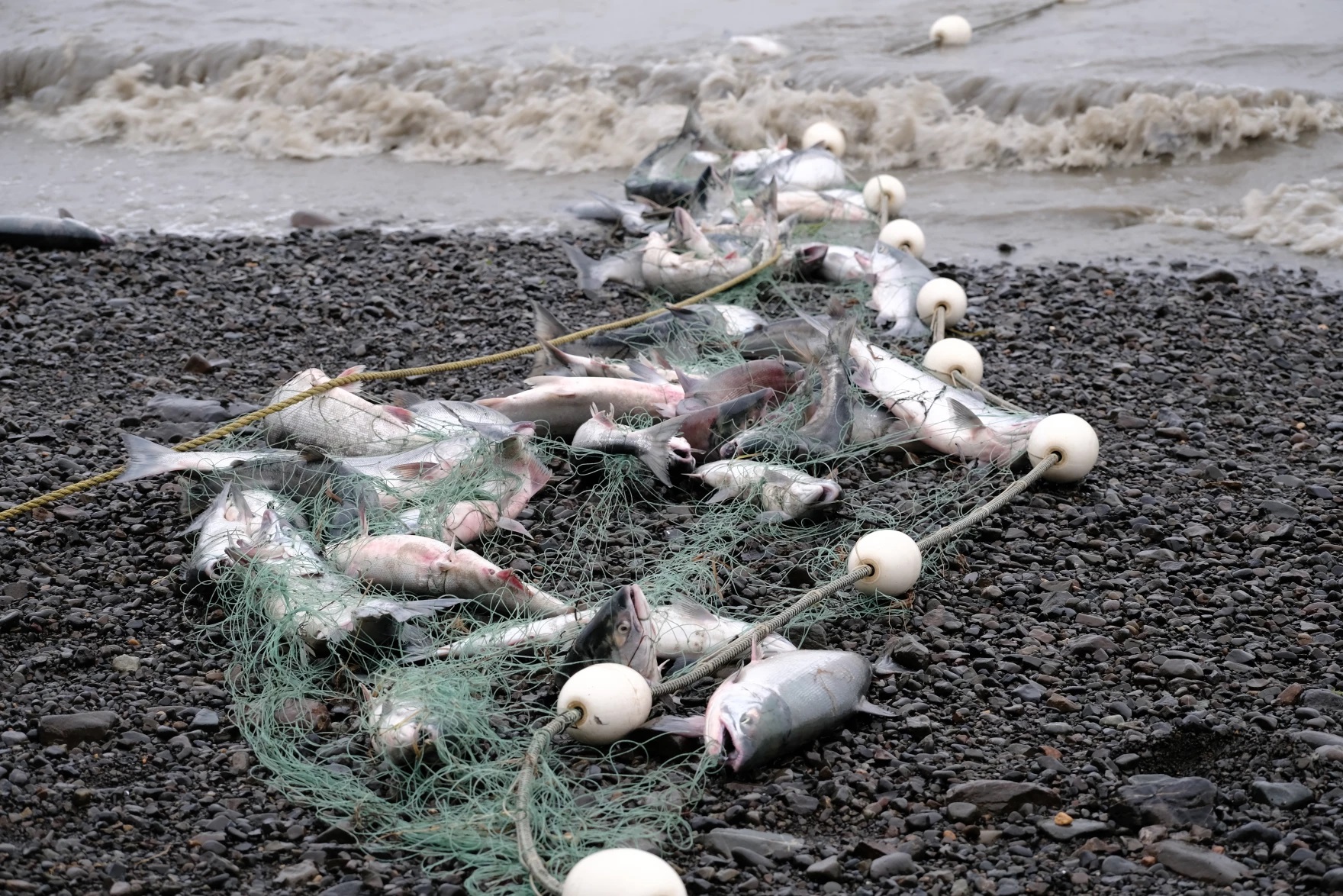
Alaskans eat a lot of fish. So many, in fact, that the federal government announced Thursday that the state needs to update its water quality standards.
The Environmental Protection Agency is giving the state Department of Environmental Conservation six to 12 months to come up with new or revised standards for more than 100 pollutants in state waters. That’s based on data showing that Alaskans eat 30 to 60 times more fish than the state’s water quality rules currently assume.
“Alaska needs to revise its limits on toxic pollutants in the state’s waters to ensure that fish eating and use of its water bodies for other uses support healthy people and communities,” said Caleb Shaffer, the acting director of the EPA’s water division for the Pacific Northwest, reading from a prepared statement. “New standards will reduce the amount of pollution that industries and wastewater treatment plants will be allowed to discharge from their pipes into local waters.”
The state’s water quality rules, last updated in 2003, assume Alaskans eat about seven ounces of fish per month. That’s based on a national average calculated in 1992.
But the EPA cites studies from a variety of sources, including the Sun’aq Tribe of Kodiak, the Seldovia Village Tribe and the state of Alaska itself, that say Alaskans eat at lot more: seven to 14 ounces per day.
Maggie Rabb leads the Southeast Alaska Conservation Council, which, alongside the Chickaloon Village Traditional Council, petitioned the EPA to force the state to update its standards in 2015.
“If you’re eating a lot more seafood, your seafood needs to have less pollution in it,” she said in a phone interview. “You need to be more thoughtful about what you’re allowing into the water here in Alaska, because we’re eating a lot more of the seafood that’s coming out of that water.”
Rabb said the state has long known that its water quality standards underestimate how much fish Alaskans eat, and Alaska Department of Environmental Conservation spokesperson Kelly Rawalt said the EPA’s findings were not a surprise.
“There’s nothing in the EPA’s release today that we didn’t know,” she said by phone. “We’ve been working on updating that criteria for several years now to reflect current science and science policies pertaining to the protection of human health and state water quality standards, so we’re absolutely working with the EPA on this topic.”
Rawalt said the state is “committed” to meeting the EPA’s six- to 12-month timeline. She said the state sought feedback on new rules in 2023 and plans to submit a new plan to the EPA soon. The new standards would then go out for public comment before they’re implemented.
“We’ve got lots of very capable subject matter experts in our department that have been working for many years on this topic and care a lot about it,” Rawalt said. “We’re hoping to come up with a plan that balances all those that are impacted and is the best solution for Alaskans.”
But if the state fails to address the issue, the EPA said it’s prepared to step in and issue its own rules.
Eric Stone covers state government, tracking the Alaska Legislature, state policy and its impact on all Alaskans. Reach him at estone@alaskapublic.org.




